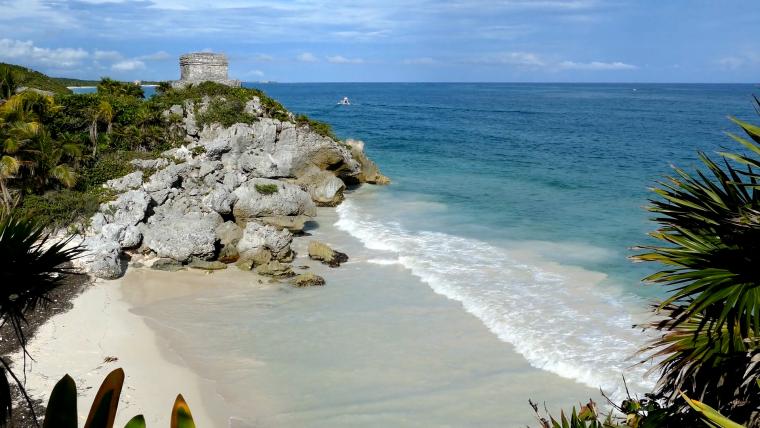
Among Mayan temples and sacred cenotes, return to Tulum’s spiritual roots
Overlooking the waters of the Caribbean, multiple temple ruins gleam in the sunlight. These are the remnants of a bygone civilisation once known by the Mayans as Zama, meaning “dawn”. Today, Tulum is a hub for spiritual pilgrims. While the Mexican town has surged in popularity to become a resort destination, its ancient heart remains.
One of the only locations to have Mayan ruins by the sea, Tulum was originally a port that reached its height between the 13th and 16th centuries. The Tulum archeological zone preserves the structures that remain. Sitting atop a cliff, Templo del Dios de Viento is named after the god of wind and was said to whistle in a gale, indicating the imminent arrival of treacherous weather. Templo del Dios Descendente features a relief of the prominent descending god who is frequently depicted upside down. He is associated with Ah Muzen Cab or the god of bees and honey, a crucial figure in Mayan mythology. Honey was an important commodity to the Mayans, and was traded between Tulum and the city of Cobá over 45 kilometres away. Here, the Nohoch Mul Pyramid also depicts the venerated god at its temple.
The most notable ruin in Tulum is the 7.5 metre-high El Castillo. It once functioned as a lighthouse for incoming tradesmen as well as a place of worship. Walk down to the beach below where Mayan canoes would stop over, and swim beneath the watch of the towering relic. To experience the prolific marine life, head further into the depths for a snorkelling tour. Tulum forms part of the Mesoamerican Reef, the second largest in the world. Stretching from Mexico to Honduras, it’s home to over 60 coral types and 500 species of fish.
Tulum is not only known for its diving opportunities, but its sacred pools inland. Approximately 20 minutes from the beach are numerous cenotes, which are wells of ground water created from collapsed limestone. From the quiet and open Cristal and Escondido cenotes to the popular Gran Cenote where caverns beckon to divers, these sinkholes offer blissful respite from the heat. The Mayans considered them lifegiving sources of water, as well as portals to the underworld.
While contemporary Tulum may be replete with hotels and boutiques, reminders of its spiritual roots are abundant. If you are in search of a new beginning, journey here and be guided by the wisdom of the past.






























Please sign in to leave a comment